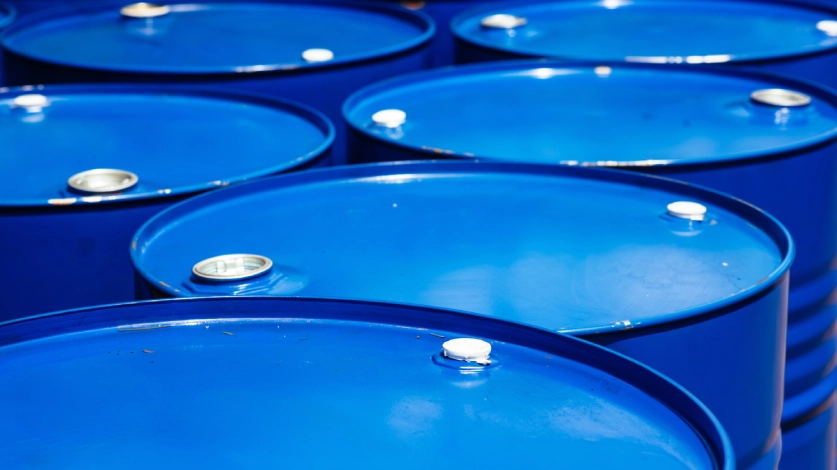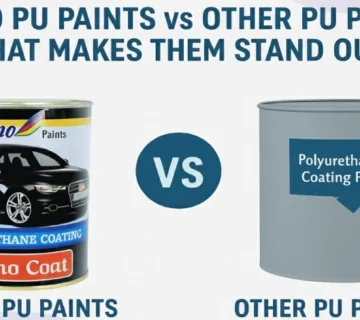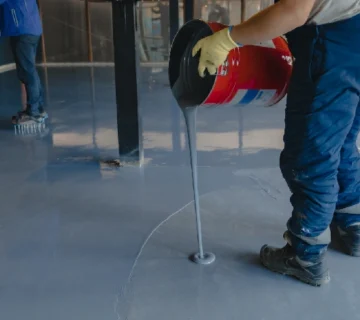When it comes to paint formulations, PU (Polyurethane) paint is a popular choice due to its durability and excellent finish. Whether you’re painting furniture, vehicles, or industrial machinery, PU paint offers a glossy, smooth, and highly resistant coating. However, to achieve the perfect finish and ensure the paint is easy to apply, certain additives like PU Thinner are essential. In this blog, we’ll explore what PU Thinner is, the raw materials used for its production and the intricate manufacturing process of PU Thinner.
What is PU Thinner?
PU Thinner, also known as Polyurethane Thinner, is a solvent that is used to dilute PU paint or varnish to ensure it flows better and can be applied more smoothly. This thinner plays a vital role in improving the consistency of the paint, making it easier to apply and ensuring that it dries properly. By adjusting the viscosity of the paint, PU Thinner ensures the desired finish, whether it be glossy, matte or satin.
Thinners are not just about diluting the paint; they also aid in cleaning brushes and spray equipment after painting, thereby increasing the lifespan of the tools. Moreover, PU Thinner helps prevent the formation of air bubbles in the paint, ensuring a smooth and even finish.
Raw Materials Used for PU Thinner
The production of PU Thinner involves a combination of various chemical substances that help create a solvent capable of dissolving the resins and other solid components in PU paints. Typically, the raw materials used for the production of PU Thinner include:
1. Aliphatic Hydrocarbons:
These are the primary base solvents used in the formulation of PU Thinner. They are derived from petroleum and have low volatility, making them suitable for use in a variety of industrial applications, including as a paint thinner.
2. Aromatic Hydrocarbons:
These compounds, such as toluene and xylene, are used in smaller quantities. They help to reduce the evaporation rate of the solvent and improve the flow properties of the paint. However, they need to be used carefully due to their potential health hazards.
3. Isobutanol:
Isobutanol is a type of alcohol commonly used in producing PU Thinners. It serves as a solvent that helps in reducing the viscosity of the paint, ensuring it flows more easily during application. Isobutanol also plays a crucial role in controlling the evaporation rate of the thinner, allowing for a more controlled drying time. This helps in achieving an even and smooth finish, making it an important ingredient for high-quality PU Thinners.
4. Esters:
Esters such as ethyl acetate and butyl acetate are sometimes used in PU Thinners to provide better solvent properties. They also contribute to the paint’s smooth application and enhanced finish.
5. Ketones:
Acetone is often included to aid in dissolving more stubborn components in the paint. They also help in improving the cleaning ability of the thinner, especially for tools and equipment.
These raw materials, when blended in precise proportions, create a solvent with the perfect balance of properties needed for effective thinning of PU paint.
Manufacturing Process of PU Thinner
The Manufacturing Process of PU Paint involves multiple stages, from selecting raw materials to creating the final product. Similarly, the production of PU Thinner follows a set sequence of steps to ensure high-quality, consistent products.
Step 1: Raw Material Selection
The first step in the manufacturing of PU Thinner is the careful selection of raw materials. The thinner manufacturers choose specific solvents like xylene, toluene, and acetone based on the type of paint they are targeting. These materials are sourced from certified suppliers to ensure consistency and quality.
Step 2: Formulation and Mixing
Once the raw materials are chosen, they are mixed in large industrial tanks. This is the most crucial stage, where thinner manufacturers combine various solvents and additives in the correct proportions. The mixing process must be done under controlled temperatures and conditions to prevent any unwanted reactions between the chemicals.
For instance, aromatic hydrocarbons are added first, followed by ketones and alcohols. Plasticizers, if used, are introduced at this stage to give the thinner a more flexible and consistent flow.
Step 3: Filtration and Purification
After mixing the raw materials, the thinner undergoes a filtration process to remove any impurities or foreign particles. This is vital to ensure the product is free of contaminants that might affect the final paint finish or the performance of the thinner.
Step 4: Quality Control Testing
Before packaging, the PU Thinner undergoes several quality control tests. These tests include checks for viscosity, evaporation rate, and solvent strength. The consistency and performance of the product are compared against established standards to ensure that it meets the requirements for safe and effective use.
Step 5: Packaging and Distribution
Once the quality of the PU Thinner is approved, it is packaged in appropriate containers such as metal cans, plastic bottles or drums, depending on the size required by the end-user. The product is then labeled with all necessary safety warnings, usage instructions, and product details. After packaging, the product is ready for distribution to paint manufacturers, hardware stores, or other outlets.
Applications of PU Thinner
PU Thinner is used in a variety of applications:
Polyurethane Paints:
The primary use of PU Thinner is in adjusting the viscosity of polyurethane-based paints. Whether it’s for industrial, automotive, or architectural purposes, PU Thinner ensures that the paint is applied smoothly and evenly.
Crackle Paints:
PU Thinner is also used in the manufacturing of crackle paints. Crackle paints create a distinctive, cracked finish that is often used for decorative effects in furniture, walls and other surfaces. Paints Manufacturing Companies India rely on high-quality PU Thinners to achieve the desired texture and finish in their products. The thinner ensures that the crackling effect forms properly during the curing process.
Surface Preparation:
Before applying paints, it is common to clean and prepare surfaces using thinners. This helps remove grease, dirt, and any old paint residues to ensure a strong bond between the surface and the new coating.
Cleaning and Maintenance:
PU Thinner is also used for cleaning tools and equipment used in applying polyurethane paints. It effectively removes dried paint from brushes, rollers, and sprayers, ensuring that they remain in good working condition for future use.
To Conclude
PU Thinner plays a critical role in ensuring that Polyurethane paints maintain their ideal consistency and performance characteristics. By understanding the raw materials used in its production and the steps involved in the manufacturing process of PU Thinner, you can appreciate the complexity behind creating the perfect coating for your projects.
For those in the industry, it’s important to choose reliable thinner manufacturers who provide high-quality products. Additionally, businesses like Crackle Paints Manufacturers in Ahmedabad are experts in delivering unique finishes and innovative solutions. Whether you’re applying a glossy finish to furniture or ensuring the durability of industrial machinery, understanding the role of Polyurethane Thinner and achieving excellent results.





